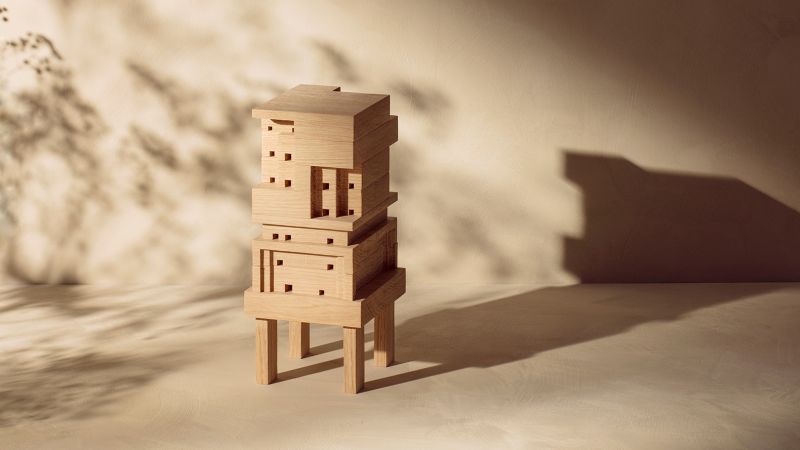
Bees, essential for global ecosystems and food production, face alarming declines. As species such as honeybees dwindle, innovative projects aim to reverse this trend and support pollinator populations. One notable initiative is the “Pollinator Pathway,” developed by London-based artist Alexandra Daisy Ginsberg. This online tool allows users to design gardens that attract and nourish pollinators, including bees, which are increasingly threatened by habitat loss and environmental changes.
The “Pollinator Pathway” employs an algorithm to prioritize flowering plants that are vital for pollinators’ nutrition. Ginsberg describes these gardens as “living artworks,” showcasing the beauty and importance of biodiversity. The project is featured in the exhibition “More than Human” at the Design Museum in London, which runs until October 5, 2023. This exhibition emphasizes the interconnectedness of humans with animals and plants and seeks to inspire a more harmonious relationship with nature.
The significance of pollinators extends beyond aesthetics. According to the United Nations, around one-third of the world’s food production relies on these creatures. Yet, the decline in bee populations is stark. The National Agriculture Statistics Service reported a drop in honey-producing bee colonies in the United States from 5.9 million in 1947 to 2.44 million in 2008. Recent data indicates a staggering 62% loss in managed honeybee colonies reported by commercial beekeepers between June 2024 and February 2025.
Harland Patch, an assistant research professor at Pennsylvania State University and co-author of “The Lives of Bees,” cites landscape change as a primary cause of this decline. He notes that the loss of diverse flowering plants, exacerbated by climate change, pollution, and pesticides, significantly impacts pollinator survival.
Designing with Pollinators in Mind
Efforts to support bee populations have led architects and designers to create “pollinator-friendly” gardens. One such initiative is the “Alusta” pavilion, designed by the Finnish architecture practice Suomi/Koivisto. Completed in Helsinki in 2022, this temporary structure integrates a garden filled with plants known to attract pollinators. Co-founder Maiju Suomi explains that by collaborating with ecologists, they selected species like cowslip, lemon thyme, and wild strawberry to create a vibrant space that underscores the connection between human and non-human life.
In 2021, the Arboretum at Penn State University introduced a dedicated Pollinator and Bird Garden, featuring native flowering plants to attract local pollinators and birds. Designed by Didier Design Studio, the garden aims to inspire community action in pollinator-friendly planting. Patch encourages neighborhoods to prioritize flowering plants, stating, “We should be shocked if a neighborhood is not filled with flowers.”
Innovative Habitats for Bees
In addition to food sources, providing shelter for bees is crucial. Traditional beehives have evolved, and at the recent Milan Design Week, a new modular beehive called “Host” was unveiled by the design studio Layer in collaboration with Andreu World. This design improves upon conventional hives by enhancing ventilation and insulation, ensuring a better living environment for bees.
Similarly, French artist Marlene Huissoud created a unique beehive for the Melipona bee at the SFER IK Museum in Mexico. The structure mimics a cluster of tree trunks, providing a comfortable and private habitat for the bees. Huissoud’s designs, inspired by her upbringing with a beekeeper father, emphasize the importance of creating spaces that cater to the needs of these insects.
While honeybees are well-known, they represent only a fraction of the approximately 20,000 bee species worldwide. Many are solitary and prefer unique nesting environments. To cater to these bees, “bee hotels” have become popular, featuring bundles of hollow canes or wooden logs that mimic natural habitats. In 2020, designer Tanita Klein collaborated with Bakken & Bæck and Space10 to create “Bee Home,” a modular bee hotel that can be customized for various styles and dimensions.
In Brighton, England, new building regulations require the inclusion of “bee bricks” in construction, ensuring that solitary bees have nesting opportunities in urban areas. Suomi emphasizes the importance of both direct and indirect design interventions to combat climate change and support biodiversity.
As the world faces an ecological crisis, these innovative solutions highlight the critical role of design in fostering environments that support bees and other pollinators. The ongoing decline in bee populations serves as a reminder of the urgent need for collective action to protect these vital creatures and the ecosystems they sustain.






